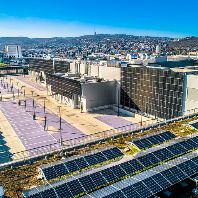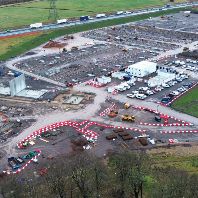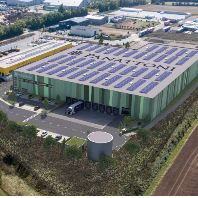Global cross-border investment increased by 60% year on year and accounted for 40% (US $130 billion (approx. 93.7 billion)) of all direct commercial real estate investments in 2010 (US $318 billion), according to new research from Jones Lang LaSalle's global capital markets experts. This proportion is equal to the boom years of 2006-07.
Arthur de Haast, Head of the firm's International Capital Group, commented: "During the downturn, domestic trading held up better globally than cross-border activity as investors focused their attention on familiar markets. In 2010 however, equity rich investors led the flight to quality assets in core, mature and transparent markets which has supported the resurgence in cross-border investment volumes over riskier secondary and tertiary domestic markets.
"We expect domestic and cross-border transaction growth to continue in 2011 as investors move up the risk curve."
Inter-regional volumes reached US $82 billion in 2010, the same as in 2004, and constituted one fourth of overall global volumes. At their peak in 2007, inter-regional volumes were nearly triple 2010 volumes at US $243 billion and made up over one third of overall global volumes. The pick-up in inter-regional activity has proceeded in step with the overall market, suggesting that a significant number of investors are willing to look not only outside of their domestic markets, but outside of their region.
Inter-regional investment volumes in the Americas doubled between 2009 and 2010 from US $14 billion in 2009 to US $31 billion in 2010. This strong bounce back was not only driven by the domestic market, but was led by US inter-regional activity, as foreign investors and purchasers took advantage of a pick-up in activity in the core markets to trade. Inter-regional purchasers transacted US $5.6 billion in 2009 and US $13.37 billion in 2010; inter-regional vendors acted on US $7.79 billion in 2009 and US $16.77 billion in 2010.
"Foreign investment re-entered the market aggressively in the back-half of 2010, and it began targeting just the top two trophy markets: New York and Washington, D.C. Now, those gateway cities are almost tapped out and some foreign investors are paying as much as $700 per ft² for prime real estate properties," said Steve Collins, Managing Director, Americas of Jones Lang LaSalle's International Capital Group.
"Today, the demand is increasing, but there isn't enough quality product to buy in the top two core US markets, so interest will extend to five markets in the next six months and into eight to 10 markets throughout the country by the end of the year."In 2010, Europe and the Middle East boasted more cross-border transactions (53%) than domestic (47%), with cross-border volumes made up equally of inter and intra-regional activity.
In 2010 cross-border volumes in Europe and the Middle East reached US $72 billion of a total market of US $136 billion, which was a 53% increase on 2009 when cross border accounted for US $47 billion of US $97 billion total European and Middle Eastern volumes.
Richard Bloxam, Director of Jones Lang LaSalle's EMEA Capital Markets group said: "With two of the most sought-after global markets in the region namely London and Paris and a large number of active global investors, it is no surprise that this region led the world once again in terms of cross-border activity of both buyers and sellers; we expect this trend to continue."
In Asia Pacific volumes were increasingly driven by cross-border activity during 2010 and reached 32% (US $27 billion) of overall volumes last year compared to 26% in 2009 (US $17 billion) and 47% in 2007 (US $57 billion) which was peak of the market.
Alistair Meadows, Director of Jones Lang LaSalle's International Capital Group, Asia Pacific commented: "Investors renewed desire to look at international real estate opportunities as we emerge out of the global financial crisis is not surprising given the improved market fundamentals; however, the longer term trend toward cross-border activity is a key part of Asia















